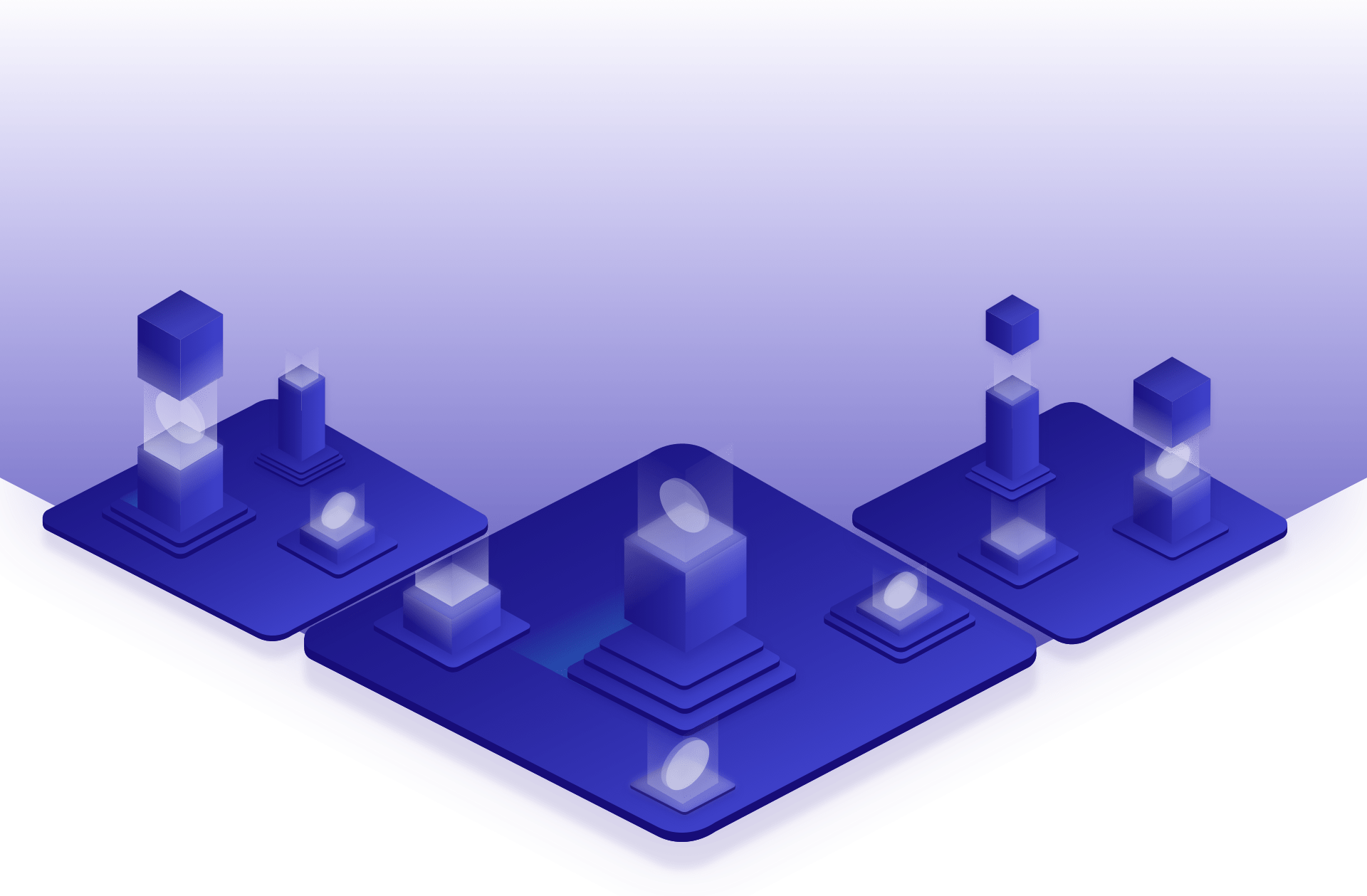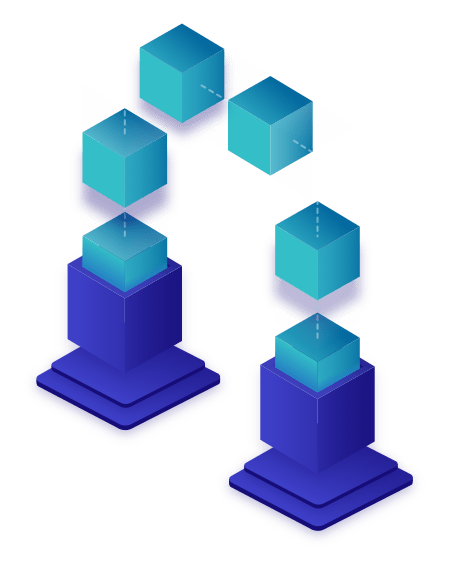Technology
Technology Platform

“Providing a platform for software developers in order to take all of the complexity away of how to manage software delivery, how to manage complex platforms like kubernetes so the developers can get on and focus with developing business solutions. People call this a paved road.”
Mark O’Neill
Chief of Research for Software Engineering
Gartner
What is a technology platform
Since the advent of computer technology, business applications have provided organizations with the tools to overcome common business challenges. Over decades, applications have radically changed, while the following has remained consistent: business apps are more often purchased based on functionality rather than the underlying technology. But what’s become clear is that legacy applications that lack the support of a robust technology platform often create unanticipated problems. When it comes to your business-critical applications, the underlying technology platform is now more critical than ever.
Definition
A technology platform is the foundation for building and running business applications. The platform allows users to run their applications smoothly without worrying about the technology that supports them. At the same time, it allows technical staff to rapidly extend, enhance, or upgrade application software, increasing the speed of business.
A modern technology platform typically includes analytics, database and data management, tools for application development and extension, integration, and intelligent technologies such as artificial intelligence (AI) and machine learning. These foundational components – or building blocks – help to drive innovation and business growth.
“In fact, IDC believes that CIOs who are tasked with fostering faster innovation throughout the organization must take an architectural mindset and focus on providing a technology platform that unifies the many applications and technologies within a typical business landscape.”
Technology platforms have been around for decades, but the rapid shift towards the cloud and intelligent technologies have elevated their importance. Modern cloud technology platforms consist of many software components assembled and optimized by the platform provider and serve as the foundation for all modern business systems.

Benefits
A modern technology platform is the key driver that allows business to scale, integrate, and extend their business applications – critical elements when it comes to business transformation.
Here are some of the common benefits of a modern technology platform:
Supports scaling with business growth
Provides data management
Supports workload management
Provides process mining
Connects and accelerates development through internal and 3rd-party integration
Provides a modern Developer Experience (DX)
Meets the needs of business analysts
Supports new, specialized applications, such as logistics, payment and tax cloud services
Provides standard productivity tools such as alerts, KPIs, workflows, drill down, and self-service reporting
Secures business data
A modern technology platform provides benefits beyond traditional application support. Today’s technology platform is critical in digital transformation, providing functionality that improves processes and drives business value for users. Digital transformation may look different for every organization, but it will always affect all areas of a company – introducing critical changes to the way business units operate.
Modern digital transformation demands a technology stack that can meet the ever-changing business landscape. Below are some new, essential capabilities to help facilitate innovation:
Artificial intelligence technologies, e.g. machine learning
Advanced analytics for improved decision-making
Simplified component building blocks for lower development and maintenance costs
A personalized experience for today’s modern workforce
Modernized databases for both transactional and analytical workloads
Out-of-the-box integration between popular applications (like ERP, Shopsystems, Marketplaces, CRM, and many more from different vendors)
“The time to accelerate innovation and evolve to a unified technology platform is now. By automating workflows, connecting experiences, enabling holistic data integration across all business processes, and extending capabilities – you’ll be able to move beyond data volume to the most critical currency for businesses today — data value.”
Sally Eaves
CTO and Global Strategy Advisor
Center for a New American Security (CNAS)
When do you need a cloud technology platform
There are many reasons why developers and their organizations decide they need a better cloud-based technology platform. Below are five of the most commonly cited reasons to make the switch:
There are many reasons why developers and their organizations decide they need a better cloud-based technology platform. Below are five of the most commonly cited reasons to make the switch:
- They need to futureproof
When new business functionality and technology breaks into the marketplace, legacy technology stacks cannot support it. With a cloud platform, companies can adopt what they need, when they need it – to stay on the cutting edge.
- They are expecting enterprise volume and/or Big Data growth
A fast-growing company expects a significant increase in transaction volume and the growth of Big Data, making moving to a scalable cloud platform a wise overall business decision.
- They want to lower the total cost of ownership
Old technology, both hardware and software, requires a great deal of maintenance and very skilled technical people that may or may not be available or cost-effective. With a cloud platform, the vendor often takes care of the maintenance for you, freeing up cost and your staff to work on the growth of your business.
- They want to ensure a secure, compliant cloud solution
Security concerns rank top in many surveys involving cloud adoption and ensuring data, integration, and all access points are secure is key to strengthening against hackers – also to maintaining compliance with local laws and enabling sophisticated access security for employees, customers, and partners.
- They want to take advantage of cloud capabilities
As a result of new and expanding capabilities, there is now significant momentum behind cloud computing deployment. One of the big attractions is a modern cloud technology platform with elasticity, high performance, security, and privacy.
Technology platform components
The modern technology platform has many different possible components. These components can be anything from products designed for specific functionality to individual platforms that can stand alone or be part of an integrated package. These components or layers are vital for a modern, cloud-based technology platform.
Developer interface
The top level of the platform defines the way developers work with the system inside and outside Qilin.Cloud. Developer interaction is an important level because it is the starting point of interaction and determines how productive a developer will be in completing tasks. It also affects how they feel about the system and the work.
The developer interaction consists of two parts: the developer interface (DI) and the Developer Experience (DX). The DI is how the developer interacts with the system. For Qilin.Cloud, this is the visual interface provided to control process chains and processors, as well as the various APIs.
On the other hand, the DX is the personal experience of a developer when using the system. The degree of intuitiveness and usability of the design has a significant impact on the productivity of the developer. With increasingly user-friendly applications and familiarity with social media, today’s developers demand simplified and highly personalised experiences that meet their individual needs. Direct communication between external developers of products based on the Qilin.Cloud technology platform, as well as Qilin.Cloud’s internal developers, is key to high DX. Qilin.Cloud Developer Platform therefore serves the collaboration between internal and external developers like you – so Qilin.Cloud can respond precisely to your needs and wishes.
Data insights
Data insights have become a driving reason to move to modern tech platform. Businesses today need to have accurate, real-time information at decision-makers’ fingertips. Unfortunately, companies found that the information they were getting from their legacy systems was out-of-date and incorrect. Today, more than ever, companies require self-service reporting and analytics that make it easy for individuals to query the system for specific, up-to-the-minute data across multiple databases and rapidly turn data into insights to help make better decisions. Technology platforms provide this vital layer of information. In addition, technology platforms can serve as a gateway for all data through their central role in the system and thus enable predictive analytics.
Qilin.Cloud goes even further:
We believe that process mining is the key for the successfully businesses of the future. When current data and logs of process chains are analysed automatically, not only bottlenecks can be detected as quickly as possible, but also the ability to have these processes easily modulated automatically followed by automatic A/B tests to evaluate the success of the modulation, resulting in a self-healing system that minimises unnecessary costs.
Products
The products layer provides functionality for performing business tasks. Products can span the enterprise – for example through ERP or CRM – or address a narrower scope, such as departmental accounts payable. At a glance, software providers behind the products may look similar, but the technology platform can be radically different underneath. It is this difference that significantly impacts how the system performs and is updated. Modern technology platforms efficiently respond to cross-enterprise business process changes and allow users to modify functionality using low-code or no-code development methods.
Today, products are increasingly being transformed by artificial intelligence and machine learning. These technologies help automate and enhance routine tasks, so staff members are free to focus on more challenging work. In addition to productivity improvements, organizations benefit from better insights and predictive analysis.
Integration
No matter how well a business’s ERP system or applications are developed, they need the capability to integrate with other systems, especially from other vendors’ CRM, HR, PIM, OMS, WMS, QMS, shop, marketplace, socialmedia, logistics, payment and procurement systems. The integration may be simple, such as an extension of the core functionality with third-party features and functions or industry-specific add-ons designed to work seamlessly with the primary system. In other cases, the work could be more complicated, involving integration with another ERP or CRM application or a customer’s proprietary systems. The ease of the initial integration and maintenance depends on the application programming interfaces (APIs). API platforms in modern technology stacks provide the framework for simple, scalable, and secure access to other cloud or on-premise systems.
Database
Data storage and management have always been critical components of a technology platform. Legacy ERP systems worked well in the past but cannot keep up with the current explosion of Big Data. The hybrids model of in-memory databases and on-disk databases that Qilin.Cloud uses provides the speed that is required at the lowest possible cost for the business.
The need for better security is another crucial consideration for modern data management, as the technology platform controls valuable data assets, user access, governance, metadata management and more.
Deployment
This final layer must support all deployment options – including cloud and on-premise computing. Cloud platforms are now the most popular choice for new software application functionality. Not only do they require minimal hardware management by the customer, much of the deployment of applications is run in secure, virtual instances for the customer, including data backup and additional resources when required. The beauty of modern cloud managed services is the cloud vendor provides the management and deployment of the hardware and software resources to provide their customers with common services for programs and databases.

Technology stack: Bringing it all together
In the old pure best of breed generation, the enterprise would select each component (or platform) based on its features and functions. They would then design and build integrations between the components to maintain each of those interfaces whenever a change was made.
However, today’s enterprise can utilize a modern technology stack with world-class components that work together on one integrated platform. This leaves the responsibility of designing, developing, and maintaining the integration up to the technology platform provider.
